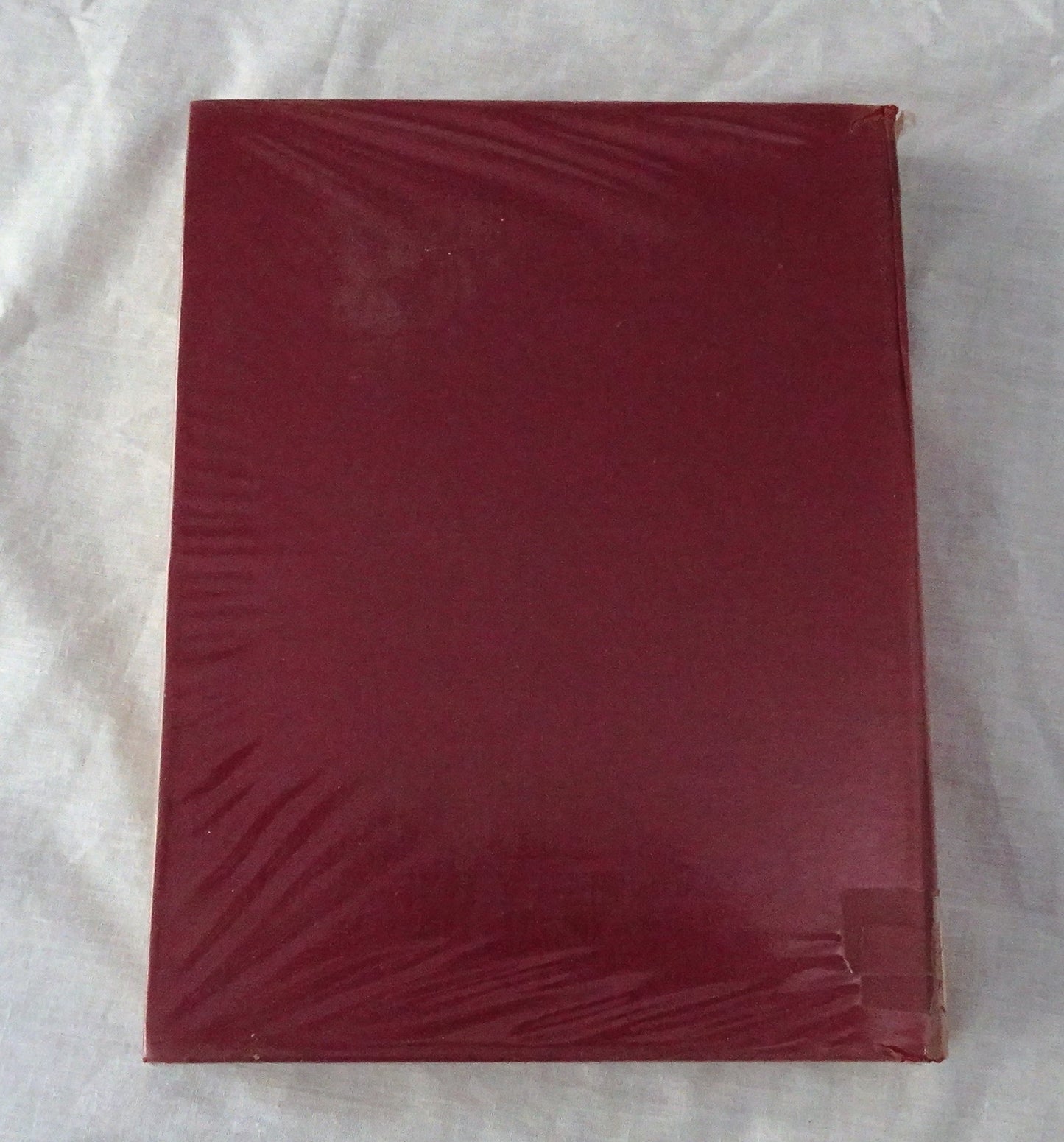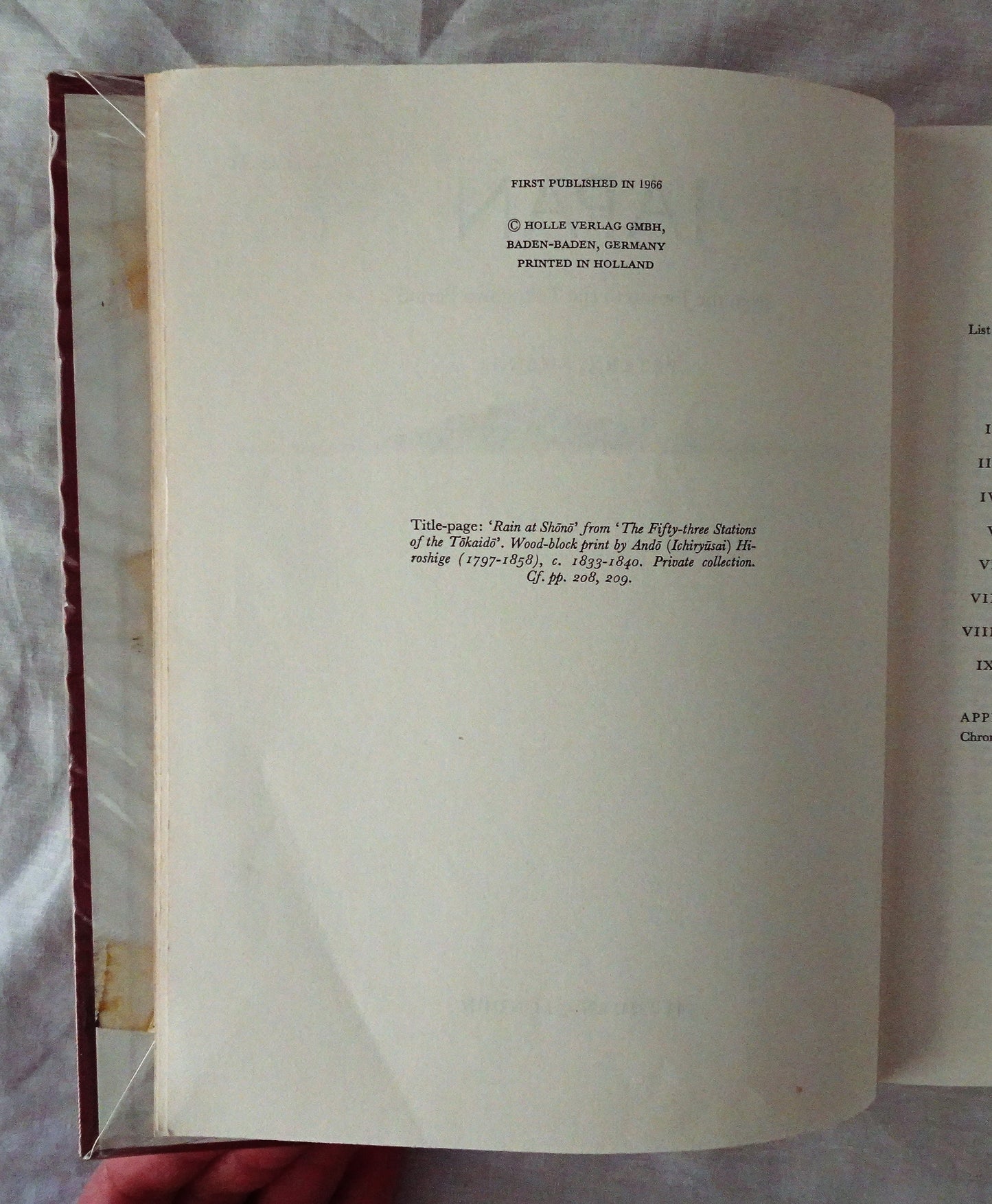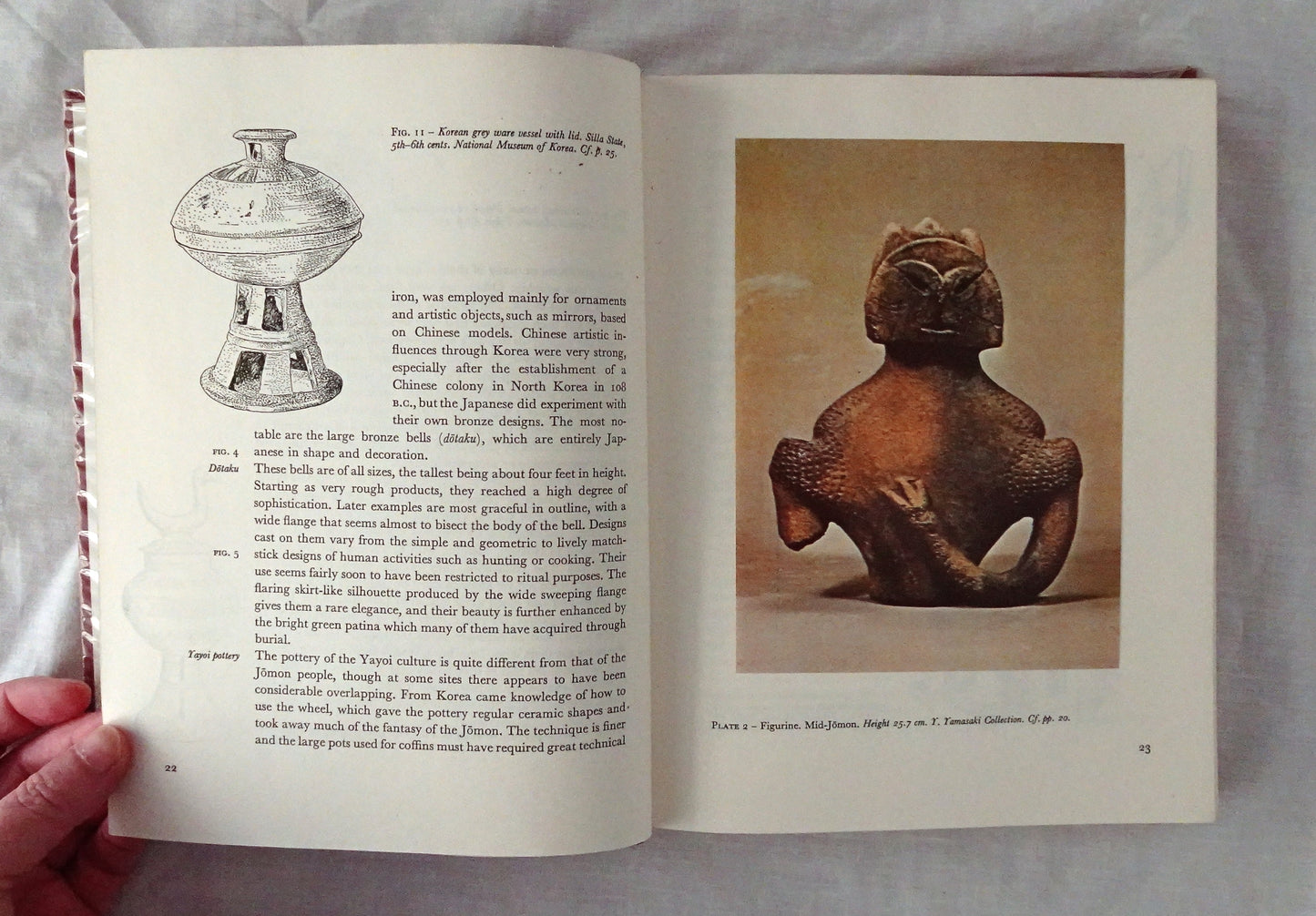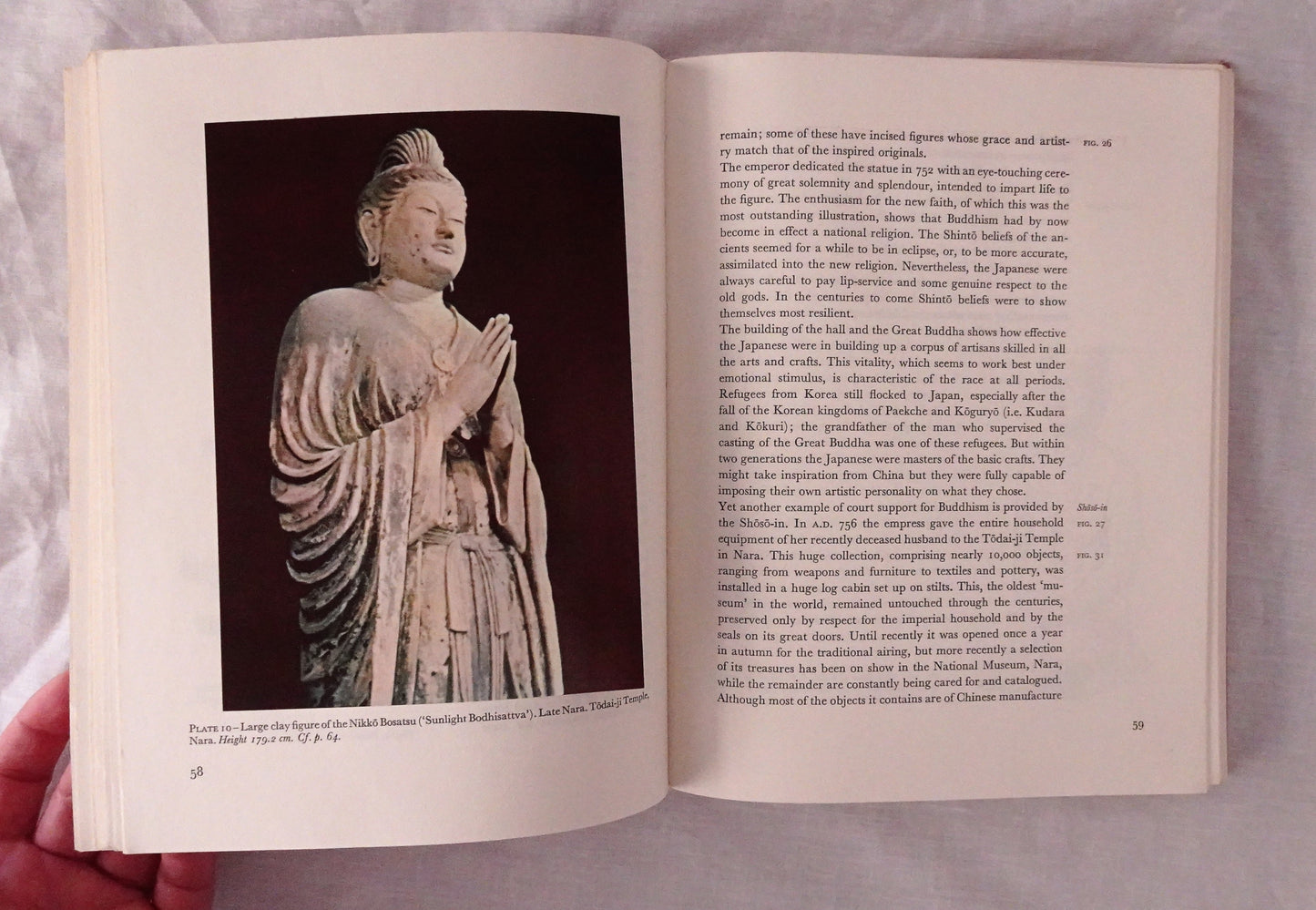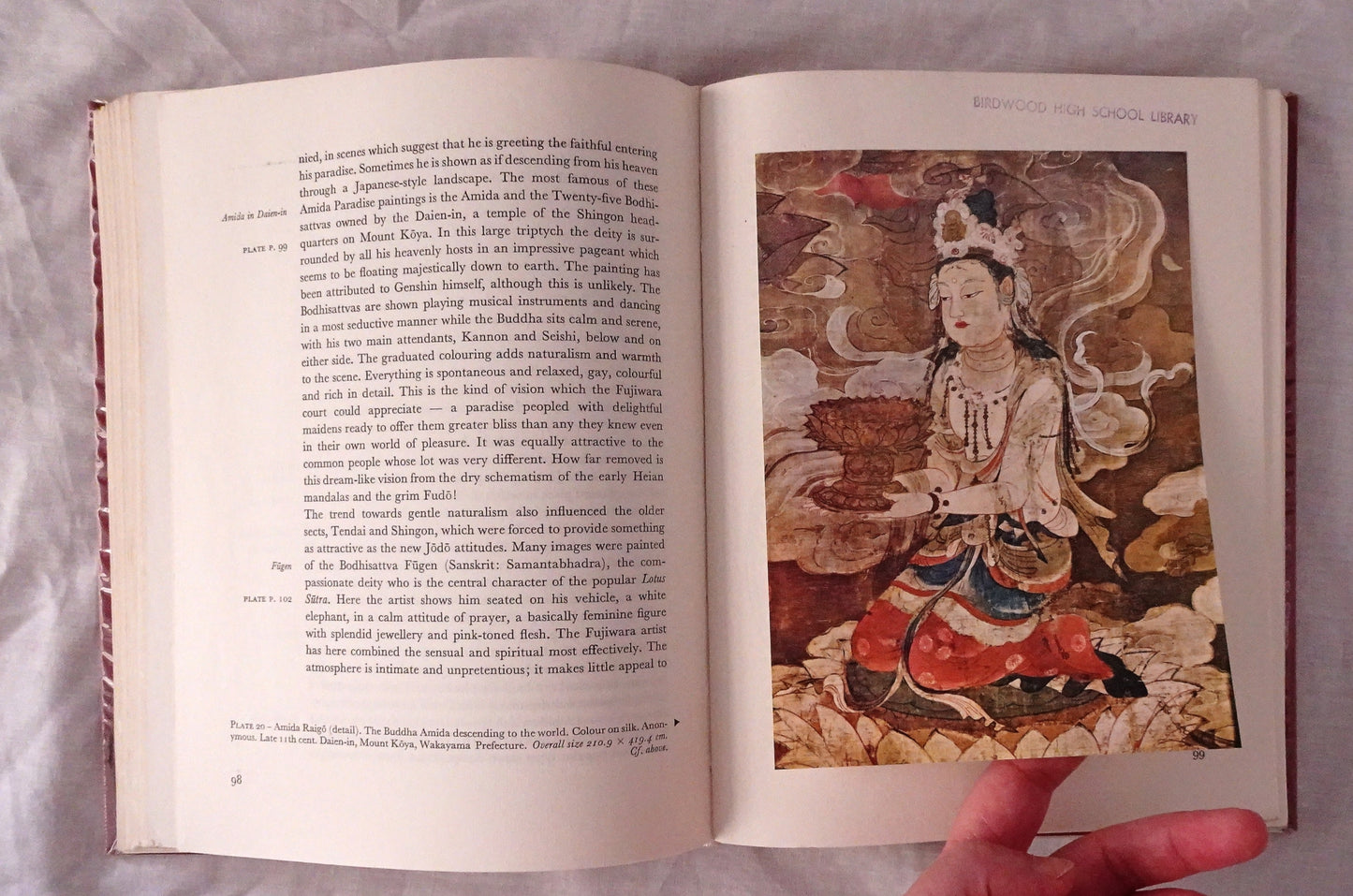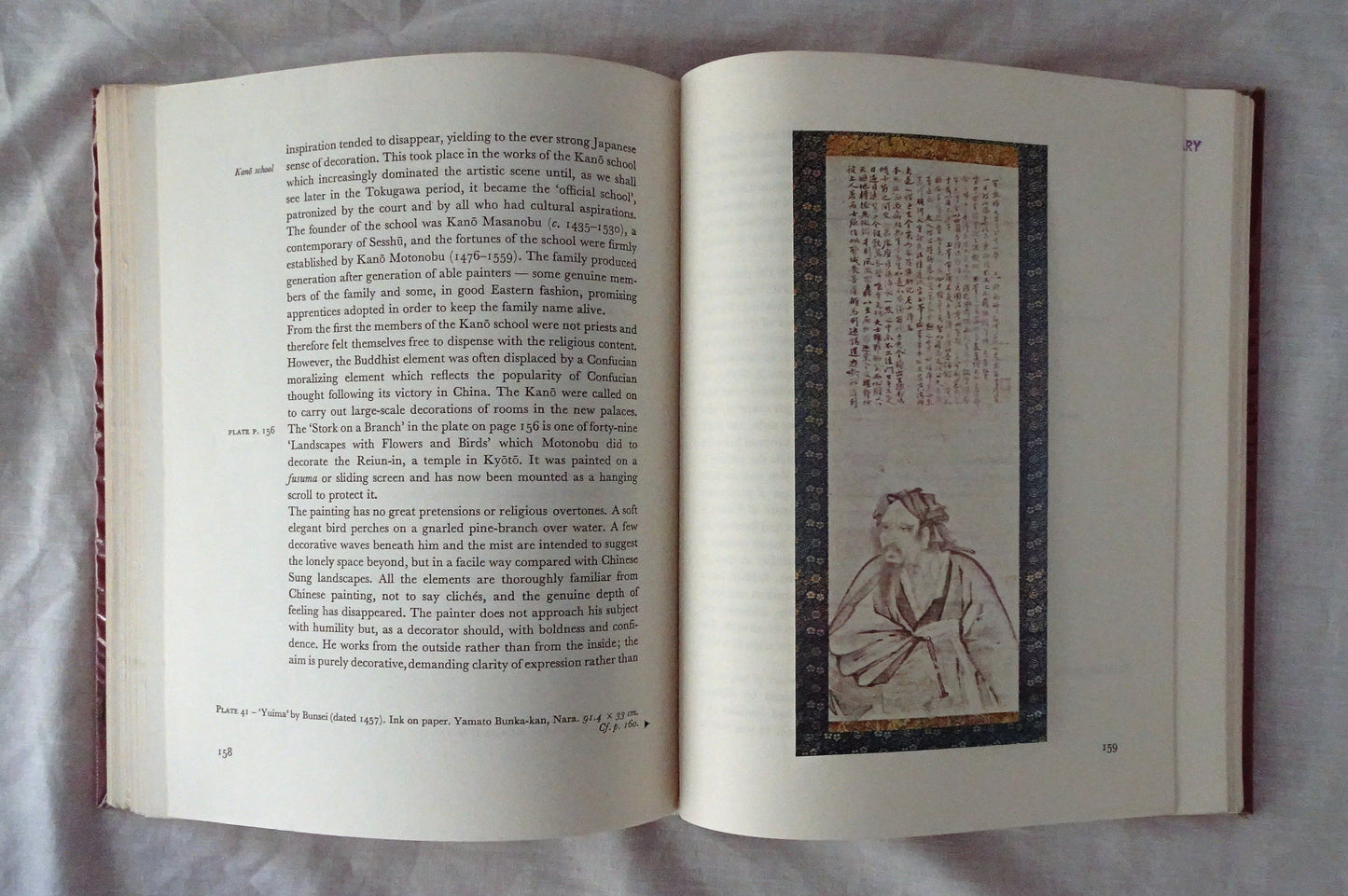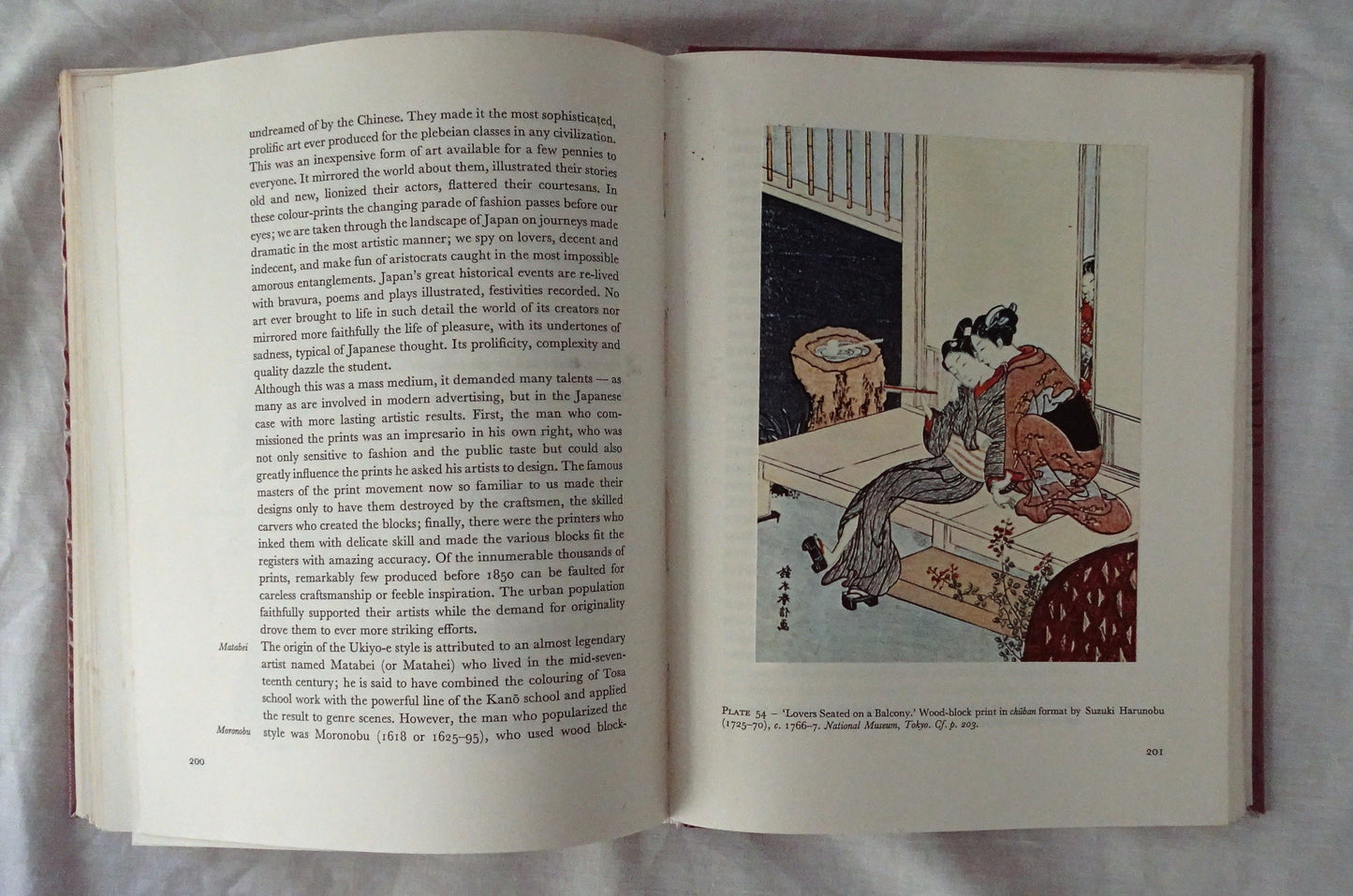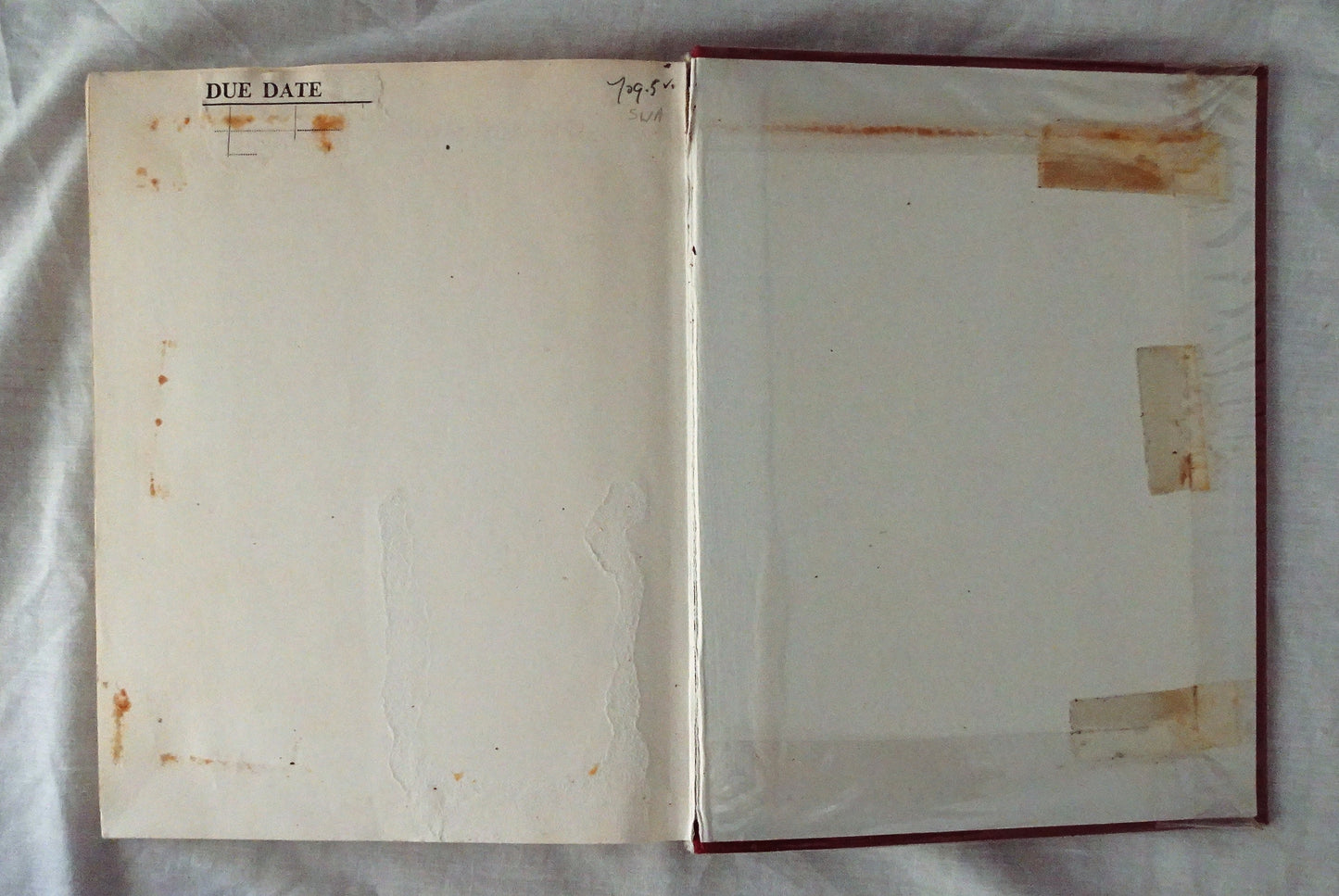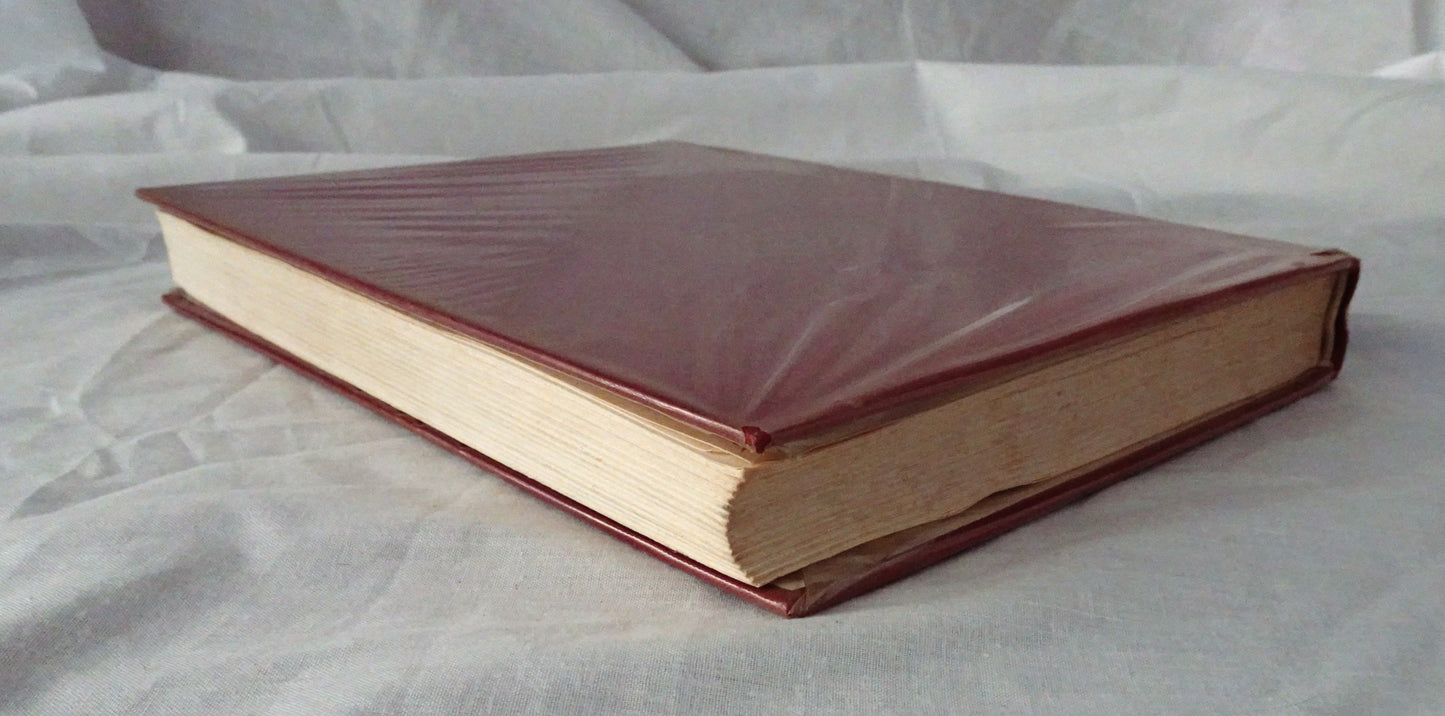Japan by Peter C. Swann
Japan by Peter C. Swann
Couldn't load pickup availability
Japan
From the Jomon to the Tokugawa Period
by Peter C. Swann
(Art of the World)
Methuen, 1966, [First Edition], illustrated colour tipped-in plates, black and white line drawings, colour tipped-in plate on title page, hardcover
Very Good Condition, some edge and shelf wear, some rubbing and bumping to edges and corners, ex-library with stamps and tape to front and back endpapers, plastic covered with tape residue (see photographs)
“Peter C. Swann, Keeper of the Department of Eastern Art at the Ashmolean Museum, Oxford, spent a lifetime studying the art of the Far East, and became intimately familiar with life in Japan. Geography, climate, and geology are powerful factors that mold the character and hence the art of a people. This is especially true of the Japanese. The sea and the coast have always played a large part in their lives and their art. The landscape, especially on the east coast, is often of unsurpassed charm. The land is heavily watered by rivers, streams, lakes, and waterfalls that add to its beauty, a beauty of which the Japanese are very much aware. Though building stone is scarce, wood and bamboo are plentiful and these materials have dictated the architecture and much of the art of Japan, notably its fine early sculpture. Swann has divided his text into nine chapters, beginning with the pre-Buddhist era, during which the widespread Jomon culture flourished for a very long time, perhaps from as early as the fifth millennium B.C. almost to the Christian Era. The last chapter closes with the opening of the country to the United States in 1868, which forced the Japanese to abandon their isolationist policy and allow foreigners into the country. Immediately thereafter, the Japanese reversed their previous behavior, and began to accept everything Western without discrimination. As a natural reaction after a little more than a decade, Japan turned once more to the preservation of her past. Many museums were founded to protect the nation’s treasures, and it is to these that we owe a large number of the masterpieces illustrated in this book.”
















